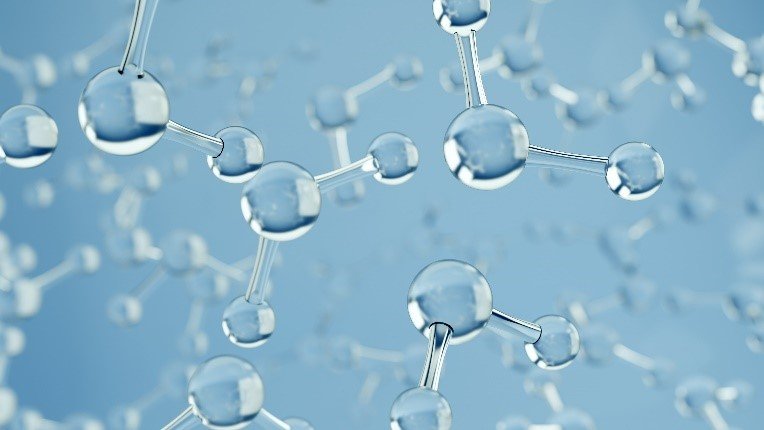Why Water Quality Should Be Your Top Health Resolution: A Comprehensive Guide to Safe, Clean Water
Why Water Quality Should Be Your Top Health Resolution: A Comprehensive Guide to Safe, Clean Water
As we settle into a new year filled with resolutions about exercise, diet, and wellness, there’s one fundamental aspect of health that often goes overlooked: water quality. While many of us focus on counting steps or cutting carbs, the very substance that makes up 60% of our bodies deserves far more attention. In this comprehensive guide, we’ll explore why making water quality a priority could be the most impactful health decision you make this year.

The Foundation of Life: Understanding Water’s Role in Human Health
Water is not just a simple molecule of two hydrogen atoms and one oxygen atom – it’s the cornerstone of human existence. Every cell, tissue, and organ system in our body depends on water to function properly. From regulating body temperature and delivering nutrients to flushing out toxins and lubricating joints, water is involved in virtually every biological process.
Consider these essential functions that water serves in our body:
- Cellular health and reproduction
- Digestion and nutrient absorption
- Blood volume and circulation
- Waste elimination
- Temperature regulation
- Joint lubrication
- Brain function and cognitive performance
- Skin health and appearance
When we consider water’s fundamental role in these processes, it becomes clear why its quality should be a top priority. Just as we wouldn’t willingly consume spoiled food, we shouldn’t accept compromised water quality.
Many people assume that because their water comes from a municipal supply or appears clear, it must be safe. However, numerous contaminants can be present in drinking water without any visible signs. Here are some of the most common concerns:
Heavy Metals
Lead, arsenic, mercury, and other heavy metals can enter water supplies through old plumbing infrastructure, natural deposits, or industrial pollution. These substances can accumulate in the body over time, potentially leading to serious health issues including:
- Neurological problems
- Developmental delays in children
- Kidney damage
- Cardiovascular issues
- Cancer risk

Chemical Contaminants
Modern industrial and agricultural practices have introduced a wide array of chemical contaminants into our water supplies:
- Pesticides and herbicides from agricultural runoff
- Industrial solvents and cleaning agents
- Pharmaceuticals from improper disposal
- Per and polyfluoroalkyl substances (PFAS) from manufacturing
- Chlorine byproducts from water treatment
These chemicals have been linked to various health concerns, from hormone disruption to increased cancer risk.

Microbiological Threats
While municipal water treatment has greatly reduced the risk of waterborne diseases, microbiological contamination remains a concern:
- Bacteria like E. coli and Legionella
- Parasites such as Cryptosporidium and Giardia
- Viruses including Hepatitis A and Norovirus
- Algal toxins from harmful algal blooms

Emerging Contaminants
New threats to water quality continue to emerge as our understanding of environmental health evolves:
- Microplastics
- Endocrine disrupting compounds
- Antibiotic-resistant bacteria
- Nanoparticles from consumer products

The Impact of Poor Water Quality on Health
The effects of consuming contaminated water can range from immediate to long-term, subtle to severe:
Short-term Effects
- Gastrointestinal illness
- Skin irritation
- Respiratory problems
- Headaches
- Fatigue
- Dehydration due to avoiding suspicious water
Long-term Effects
- Chronic diseases
- Immune system suppression
- Reproductive problems
- Neurological disorders
- Increased risk of cancer
- Developmental issues in children
Making Water Quality a Priority: Practical Steps
- Know Your Water Source
Understanding where your water comes from is the first step in ensuring its quality:
For Municipal Water:
- Request a copy of your local water quality report
- Research any historical contamination issues in your area
- Stay informed about local infrastructure projects that might affect water quality
For Private Wells:
- Schedule regular water testing
- Maintain proper construction and maintenance
- Keep records of water quality tests and treatments
- Implement Proper Filtration
Choosing the right water filtration system is crucial:
Types of Systems
- Point-of-Use Solutions
- Under-sink-filters
- Countertop filters
- Pitcher filters
- Reverse osmosis systems
Consider these factors when selecting a filtration system:
- Types of contaminants present in your water
- Your household’s water usage patterns
- Installation and maintenance requirements
- Cost-effectiveness
- Environmental impact
- Regular Maintenance and Monitoring
Maintaining water quality is an ongoing process:
- Replace filters according to manufacturer recommendations
- Clean and sanitize water storage containers
- Monitor water pressure and flow rates
- Watch for changes in water taste, odor, or appearance
- Schedule professional maintenance when needed
- Create Healthy Water Habits
Developing good practices around water consumption:
- Use cold water for drinking and cooking
- Flush pipes after periods of nonuse
- Store water properly
- Clean and maintain water fixtures
- Address leaks promptly
The Environmental Connection
Water quality isn’t just a personal health issue – it’s deeply connected to environmental health:
- Climate Change Impact
- Changing precipitation patterns
- Increased frequency of extreme weather events
- Rising water temperatures
- Greater risk of waterborne diseases
Human Activities
- Industrial pollution
- Agricultural runoff
- Urban development
- Waste disposal practices
Conservation Efforts
- Reducing water waste
- Protecting water sources
- Supporting environmental regulations
- Community involvement in water protection
Economic Considerations
- Cost of Poor Water Quality
- Medical expenses from water related illness
- Property damage from contaminated water
- Reduced property values in affected areas
- Lost productivity due to illness
Investment in Solutions
- Water treatment systems
- Regular maintenance and testing
- Infrastructure improvements
- Emergency preparedness
Special Considerations for Vulnerable Populations
Some groups need to be particularly vigilant about water quality:
Infants and Children
- Greater susceptibility to contaminants
- Developmental impacts of poor water quality
- Special filtration needs for formula preparation
Elderly Individuals
- Weakened immune systems
- Medication interactions
- Increased sensitivity to contaminants
Pregnant Women
- Fetal development concerns
- Increased water needs
- Specific contaminant risks
Immunocompromised People
- Higher risk of infection
- Need for additional water treatment
- Regular monitoring requirements
Future Trends in Water Quality
Looking ahead, several developments will influence water quality:
Technological Advances
Policy Changes
- Stricter regulations
- Infrastructure investment
- International cooperation
- Public health initiatives
Community Action
- Increased awareness
- Local water protection programs
- Citizen science initiatives
- Educational campaigns
Making Your Resolution Stick
To maintain your commitment to water quality:
Set Specific Goals
- Regular water testing schedule
- Filter maintenance dates
- Water quality improvement targets
- Educational milestones
Track Progress
- Keep testing records
- Monitor water usage
- Document health improvements
- Record maintenance activities
Stay Informed
- Follow water quality news
- Join community initiatives
- Attend educational workshops
- Connect with experts
Making water quality your top health resolution isn’t just about drinking cleaner water – it’s about taking control of a fundamental aspect of your health and wellbeing. The impacts of this decision extend far beyond personal health, touching on environmental sustainability, economic stability, and community welfare.
As you plan your health goals for the year, remember that every other aspect of health – from nutrition to exercise – depends on the quality of the water you consume. By making water quality a priority, you’re not just making a resolution; you’re making an investment in your long-term health and the health of future generations.
Take the first step today by assessing your current water quality and developing a plan for improvement. Your body, your family, and your community will thank you for making this crucial investment in health and wellbeing.
Remember: pure, clean water isn’t a luxury – it’s a necessity for optimal health and vitality. Make this the year you take control of your water quality and experience the transformative effects of this fundamental health decision.